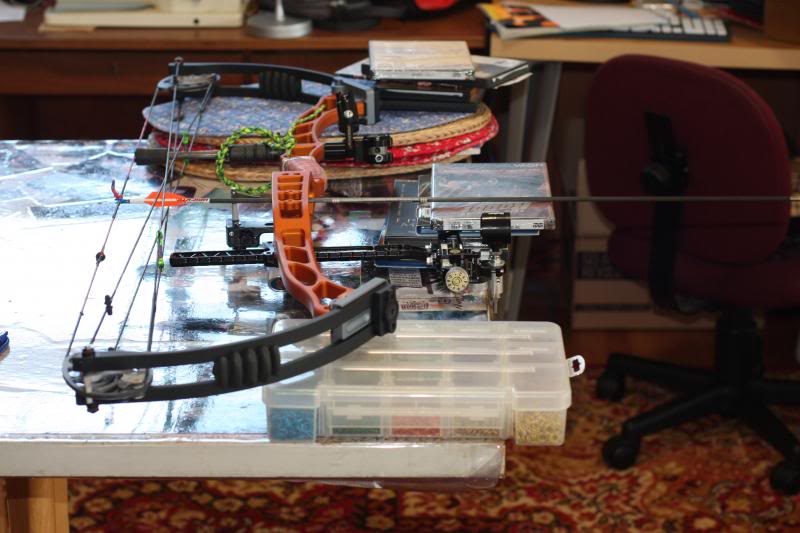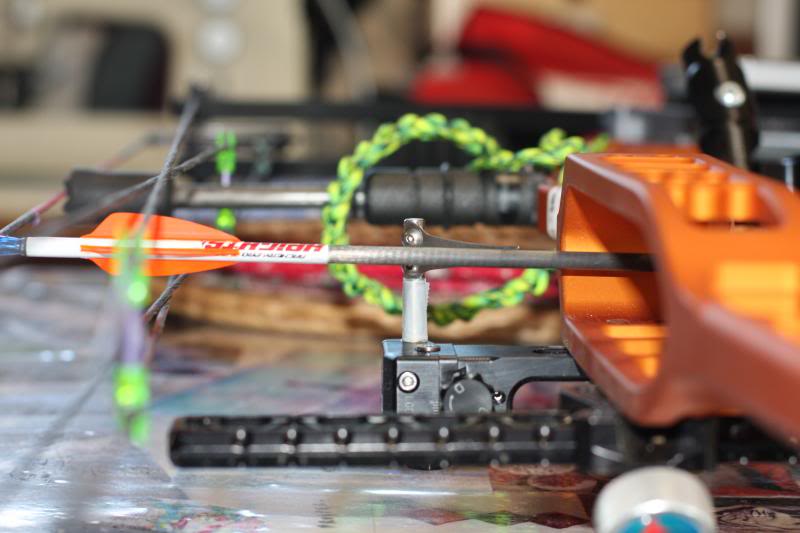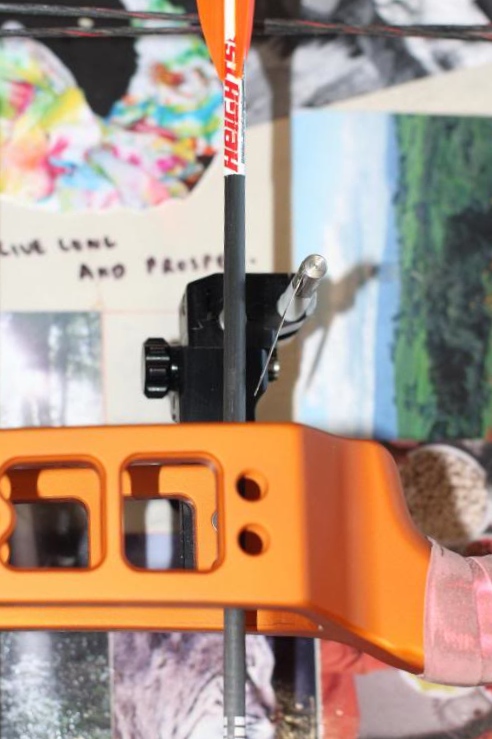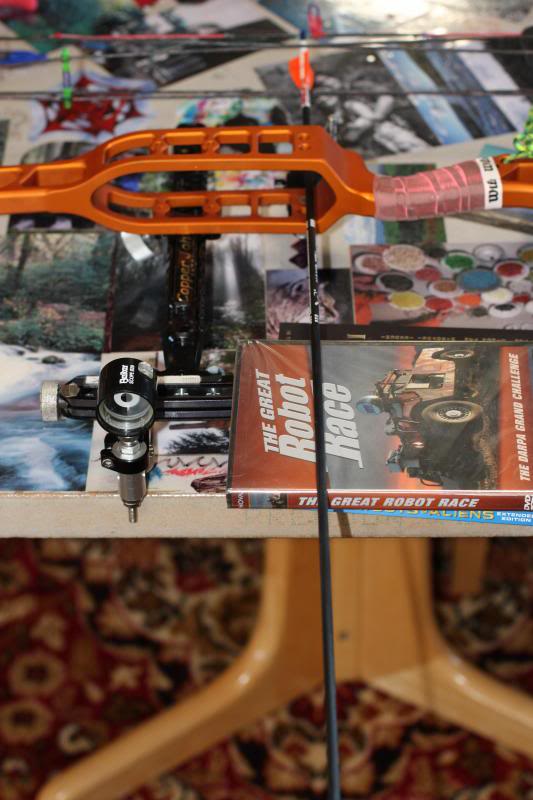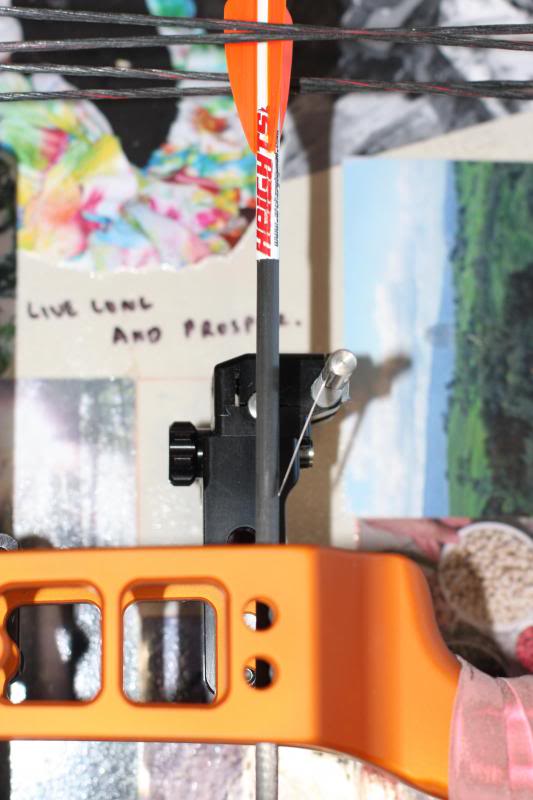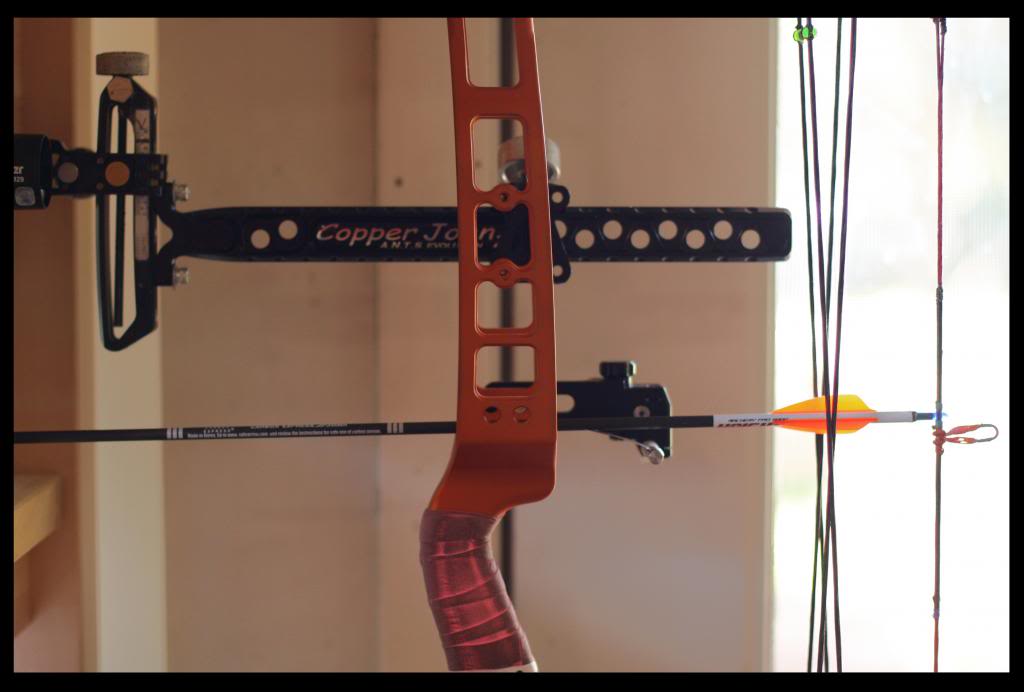
Weight of the arrow causes the blade to SAG. This is a GOOD thing. WHY? Cuz, the blade is a leaf spring suspension. The blade only GUIDES the arrow, during arrow launch. The arrow accelerates SOOOOO fast, the nock starts moving forwards BEFORE the point of the arrow starts moving forwards. This compresses the arrow tube and the arrow bends up and down and up and down, during the arrow launch. So, the blade LEAF SPRING suspension is designed to work as a SHOCK absorber....to calm down the bending of the arrow tube. WE can INCREASE the leaf spring suspension stiffness by moving the blade in the UP direction, several THOUSANDTHS of an inch. Paper for the computer printer is 0.003-inches thick. WE can DECREASE the leaf spring suspension by moving the blade in the DOWN direction. How do I know if I need MORE stiffness or LESS stiffness?
Simple. Try both directions and see what gives you the TIGHTEST groups. Start with 30 degrees BLADE angle and the thinnest possible blade (0.008 thick). BUT, I use heavy arrows? Don't matter. The blade is not a sofa cushion. The blade is a LEAF spring suspension, so we are tuning for arrow BENDING. If you are shooting GoldTip Triple X arrows, then, you are using REBAR stiff arrows, with very little bending. So, with very little ARROW bending, you need EXTREMELY little dampening, you want super SOFT shock absorber settings, so use the lightest possible THINNEST possible blade. BUT, I have 300 grain points. DOn't matter. BUT, I am using full length Triple X arrows and....don't matter your ARROW weight. The blade is about reducing arrow BENDING during arrow launch. BUT, my blade SAAAAAAAGGGS soooo much. Don't matter. You have vanes and the VANES will lift up the arrow to LEVEL Arrow flight. That's what vanes DO.
So, I am shooting skinny 400 spine Carbon Express Nano XR arrows, with only 120 grains up front. So, these PROPER spine arrows are gonna flex a bit more than the super FAT carbons. Even so, I had to DROP the arrow rest blade, about 2-3 clicks...about 0.006 inches (two sheets of paper thick)...for Tightest Groups.
Why 30 degrees? Cuz, that makes the blade behave SOFTER and increases the sweet spot for vertical tuning of your blade rest. If you tune your blade rest TOO HIGH, the blade reacts too stiff and you get that DREADED NOCK HIGH paper tear with a blade rest. If you tune the blade rest TOO LOW, then the blade will give you that DREADED NOCK HIGH paper tear. If you set the blade rest angle at 45 degrees, this is too steep, and the blade reacts TOO STIFF, and you end up with the DREADED NOCK HIGH paper tear. Lots of ways to screw up a blade rest setup, and end up with a NOCK HIGH PAPER TEAR that never seems to go away.


